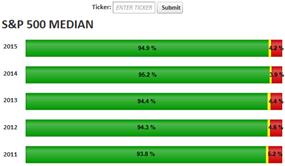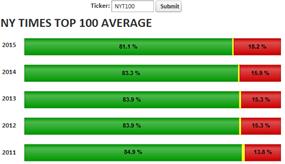|

Business Day
Why Putting a Number to C.E.O. Pay Might Bring Change
AUG. 6,
2015
It is
a confounding truth about outsize
executive pay — all past attempts
to rein it in have failed.
So why
does anyone expect a different outcome from the
Securities and Exchange Commission’s
new
rule requiring disclosure of the
gap between what a company’s chief executive is paid and what its
rank-and-file workers earn?
I put
that question to some experts on executive pay; several of them gave
intriguing reasons to be optimistic that this rule may actually do
something to curb over-the-top pay.
Their
thinking goes like this: Because the rule will generate an easily
graspable and often decidedly shocking number, it may energize a cadre
of new combatants in the executive pay fight. And because these
newcomers — company employees, state governments and possibly even
consumers — will most likely be more vocal on the matter than
institutional investors have been, the executive pay bubble might
actually start to deflate.
“The
pay ratio was designed to inflame the employees,” said
Charles Elson, professor of
finance and director of the John L. Weinberg Center for Corporate
Governance at the University of Delaware. “When they read that number,
employees are going to say, ‘Why is this person getting paid so much
more than me?’ I think the serious discontent will force boards to
reconsider their organizations’ pay schemes.”
The
rule, which passed the commission on a 3-to-2, party-line vote, has
been five years coming. Under the Dodd-Frank law, the S.E.C. had to
come up with a regulation requiring large public companies to
calculate the difference between what their top executives receive in
compensation and the median pay level for their other employees.
The
new rule goes into effect Jan. 1, 2017, over strenuous opposition from
the
U.S. Chamber of Commerce and other
corporate lobbying groups. But there was also support for the rule
from investors, individuals, academics and advocacy groups. More than
287,000 letters poured into the S.E.C. after it
proposed the rule in September
2013.
The companies’ pay ratios haven’t been calculated yet, but everyone
acknowledges that many will be astronomical. A
2014 study by Alyssa Davis and
Lawrence Mishel at the Economic Policy Institute, a left-leaning
advocacy group in Washington, showed that chief executive pay as a
multiple of the typical worker’s earnings zoomed from an average of 20
times in 1965 to almost 300 in 2013.
Some
companies’ ratios will be far
higher than that.
And
yet, Brian Foley, an independent compensation consultant in White
Plains, said the way the S.E.C. was requiring companies to calculate
the rule would probably understate the true pay gap. That’s because
the calculation, which relies upon what is known as the summary
compensation tables in the annual proxy statement, does not include
the total amounts executives have built up in their pensions and
supplemental retirement plans.
“The
pension numbers baked into the summary compensation table are only
year-over-year improvements and don’t begin to capture how much the
C.E.O. has on the table in terms of retirement money compared to how
much the troops typically have on the table,” he said.
The
S.E.C. has always contended that the rule will help inform
shareholders, especially as they ponder how to vote on companies’ pay
practices.
But
Mr. Foley doesn’t think investors will pay much attention to the new
rule. Neither does James Reda, managing director of executive
compensation consulting at Arthur J. Gallagher & Company. “It is not
clear how institutional investors or their advisers will use the pay
ratio, if at all,” he said. “However, it is conceivable that labor
pension funds may use the number to consider an investment in a
company.”
| |
Fair Game
A
column from Gretchen Morgenson examining the world of finance
and its impact on investors, workers and families
See More »
|
The
fact is, few institutional shareholders appear to be distressed by
excessive pay levels at companies whose shares they hold. A tally by
the Shareholder Forum of the most
recent votes on pay practices at companies in the Standard & Poor’s
500-stock index shows a median support level from shareholders of 94.9
percent this year.
This
complacency could have a lot to do with the rising stock market. But
it almost certainly does not reflect the views of 95 percent of
investors. What it does reflect is the practice of large
mutual fund companies like
Vanguard and Fidelity to vote their clients’ shares routinely in
support of lush pay practices whether they like it or not. These
voting policies help keep corporate boards clubby and executive pay
aloft.
Although institutional investors will probably continue to look the
other way on executive compensation, the disclosure of a pay gap may
encourage other stakeholders to act differently. That’s the view of
Sarah Anderson, global economy project director at
the Institute for Policy Studies,
a left-leaning organization in Washington.
“It
makes a lot of sense to bring the C.E.O. pay ratio out of the
shareholder realm and into the consumer’s,” Ms. Anderson said.
“There’s also interest at the state level to take this indicator of
C.E.O.-to-worker pay and incorporate it into tax policy and
procurement policy.”
She
cited a
2014 bill proposed in the
California Senate that would have raised the state’s corporate income
tax to 13 percent from 8.84 percent for companies that pay their top
executives over 400 times the median pay of their workers. That bill
also would have lowered the tax rate to 7 percent on companies with a
top-executive-to-worker pay divide of less than 25 to one.
The
bill did not pass with the two-thirds majority it needed, but one of
its co-sponsors is working to move it forward, Ms. Anderson said.
In
January, five Rhode Island senators introduced
a bill setting preferences for how
state contracts are awarded, giving a leg up to businesses that have
relatively low pay ratios of 25 to one.
A
companion bill may be introduced in the Rhode Island House of
Representatives in the next session.
It’s
possible, too, that some consumers, disturbed by the disparity between
a corporate chief’s pay and that of lower-level workers, will change
their shopping habits to favor companies whose pay is fairer. If
institutional investors won’t vote with their feet on this matter,
perhaps consumers will.
“Everybody is outraged about C.E.O. pay, but people feel they can’t do
anything about it,” Ms. Anderson said. “What I’m hoping is that this
will give people something to do about it that’s concrete.”
[The Fair Game column appears in print on page
BU1 of the Sunday New York Times.]
© 2015 The
New York Times Company |


